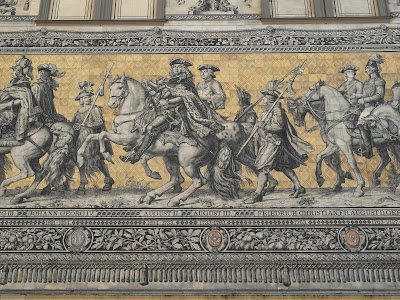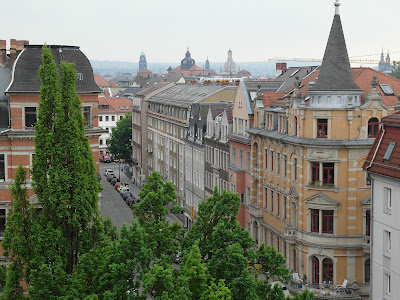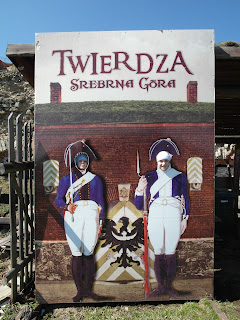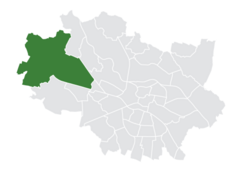Dresden was on our travelling list for a very long time and finally we made it:-). I still can’t believe that it is only 2,5 hrs’
drive from Wrocław. It is not only the distance that makes you think you are
still in Poland; it is also the architecture and the landscape. Buildings and
houses in Saxony look so similar to the ones in Silesia. No wonder because both
countries had the same ruler at one stage in the 17th century’s
history. It was Augustus II the Strong, who was elected the King of Polish-Lithuanian
Commonwealth. Thanks to the election he could be a king, not only a duke;-). He
had to ‘pay’ for it with the conversion into Catholicism and building an
impressive catholic temple Hofkirche (the biggest sacral building in Saxony).
Apparently he was a better Saxonian Duke than a Polish King weakening political
power of Poland in the war with the Russian Empire and failing to carry out
internal reforms. However, he left amazing Baroque palaces in Warsaw and
Dresden, not to mention an extremely huge and expensive collection of jewelry, art,
gemstones, sculptures, etc. Most of them can be seen in the Grünes Gewölbe
(Green Vault) – several rooms housing a breathtaking collection of very old and
precious treasures, which gave beginnings to the first and oldest museum in the
world (located in the Castle, cost: 10 euros, audioguide included, duration: it
took us about three hours). Out of so many others exhibitions displayed in Zwinger
and in the Castle it is definitely worth seeing. Of course, there is the
world-famous Sistine Madonna by Rafaello in the Old Masters’ Gallery in Zwinger,
which we did not have time to see (left for the next time, when the weather is
more suitable for museums;-).
Dresden has
many faces. Naturally the most famous one is the Old Town with many baroque buildings,
Frauenkirche, Zwinger palace and the Castle, a lot of fascinating museums and the
history of a terrible bomb damage in 1945. I could not wait to see the Old
Town, because whoever I had talked to before was mentioning it and for me,
first, seeing Dresden meant seeing the Old Town. How lucky I was that I could see also other
faces of that amazing city! The Old Town is a landmark and a must-see, of
course, and I especially recommend looking at it from the Augustus Bridge – it
forms an amazing skyline, but all in all I was a little disappointed that it is
not bigger and that it is quite black (the buildings are made of sandstone,
which is very difficult to clean).
On the other
side of the Elbe river the second face appears: a very hippie and artistic off-the-mainstream
Neustadt (New Town) with fantastic and colourful Kunsthof, a lot of small
caffes, bars and small cute shops, where one can wander (and wonder) for ages.
One could spend the whole day strolling only around Neustadt, exploring every
nook and cranny of that sometimes very surreal, but very welcoming, place. The new town has also its old Martin-Luther
church located in a calm square and surrounded by beautiful old houses. What is
also worth mentioning is the amazing cinema that looks like from the 1920’s
with huge (open) windows and chairs and tables behind inviting you to have a
coffee after or before the showing.
Other faces
are also very interesting and an absolute must-see including a beautiful area
around the Blaues Wunder Bridge with breathtaking views and the two oldest
mountain railways in the world (we took Schwebe Bahn), the river Elbe itself (steamboats,
cycling, hiking, beer gardens), the glass VW factory, where you feel like in a
luxurious space centre and really feel the huge amount of money they have put
into it and many palaces and castles in the city and outside (e.g. Meissen,
where they produced the famous china).
A separate
chapter should be devoted to a fascinating land of sandstone mountains and rock
shapes called Saxonian (and Bohemian) Switzerland. We climbed powerful Lilienstein, from where
you have a 360 degree-view on the other amazing rock forms and the Elbe river.
Photos by K. Szostak, all rights reserved


















































